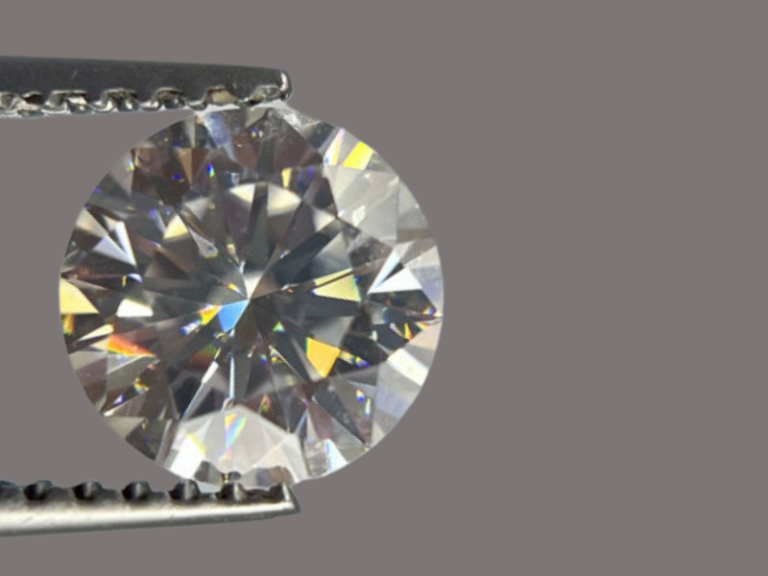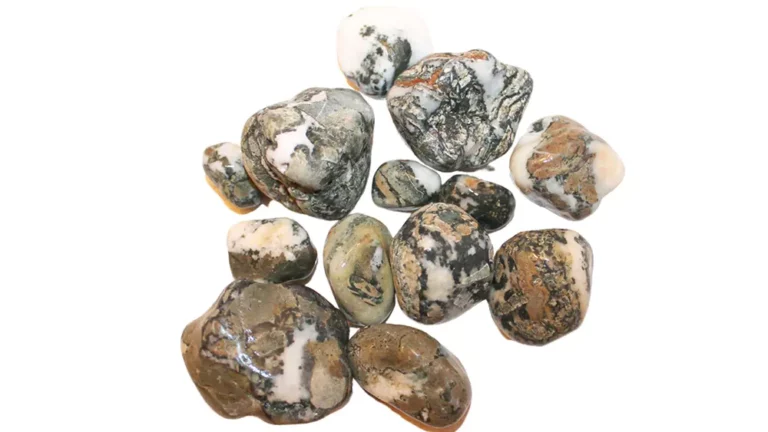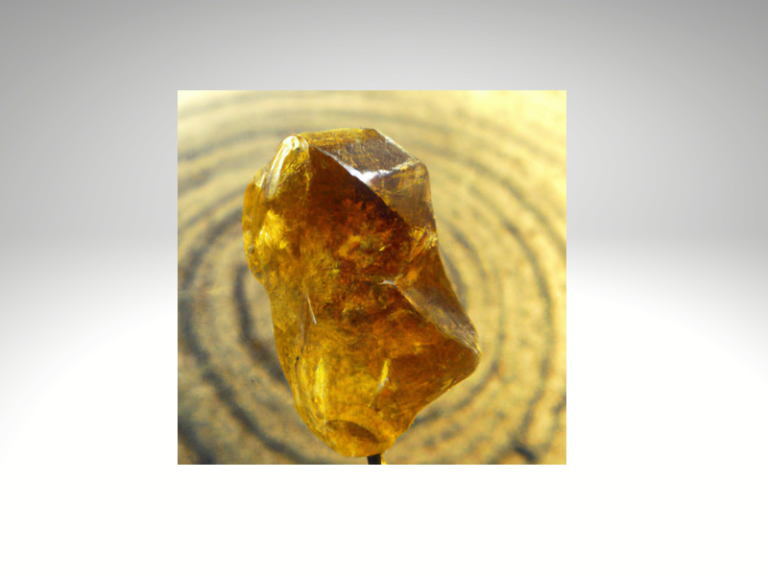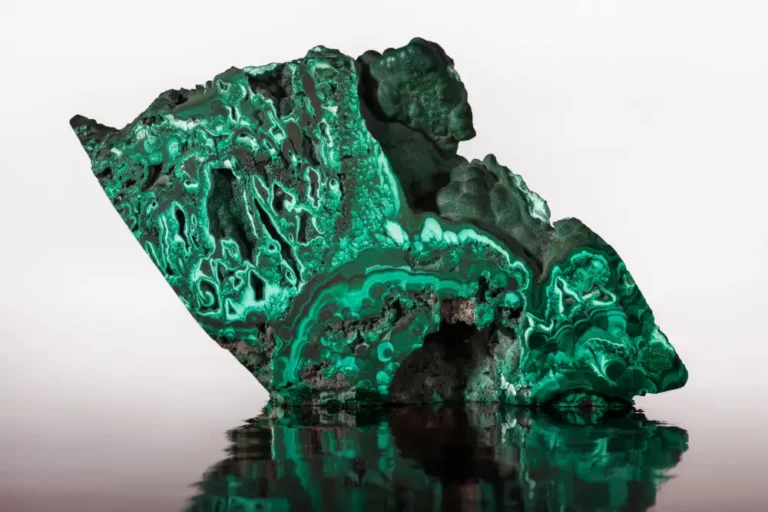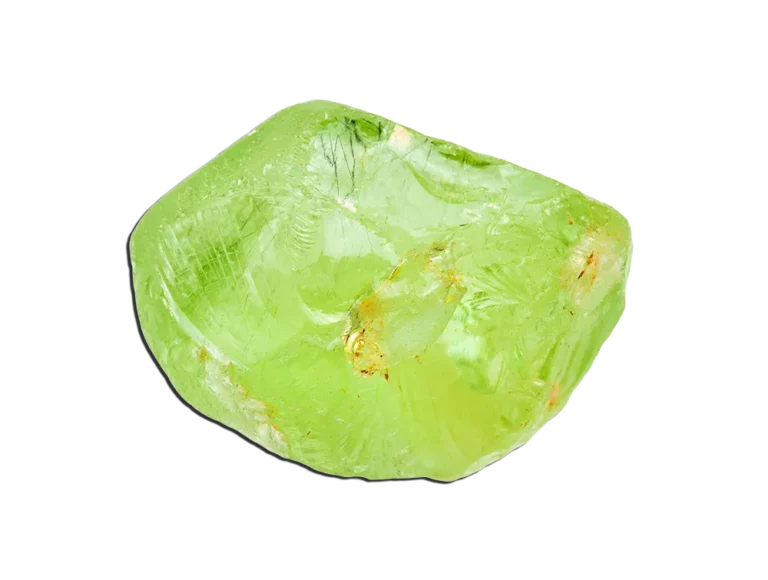Helenite Gemstone: Properties, Benefits & Meanings

Helenite Gemstone Overview
Helenite is a man-made gemstone with an interesting origin. It is created from the volcanic ash of the 1980 eruption of Mount St. Helens in Washington, USA. Also known as Obsidianite, Mount St. Helens Stone, Mount St. Helens Emerald, Mount St. Helens Obsidian, Emerald Obsidian, Ruby Obsidianite, and Gaia Stone, it is produced commercially in controlled laboratory environments. Clean-up crews found it after the Mount St. Helens explosion in 1980. It was a discovery made by accident. Helenite is believed to possess the Earth’s energy and is known as the “Soul of the Earth.”
Its vibrant green hue, reminiscent of lush forests and emerald landscapes, is undoubtedly its distinguishing feature. However, this gemstone’s color varies from deep green to lighter shades, offering various options for different tastes. In this article, we will look into the properties, benefits, and meanings of Helenite Gemstone and its uses in jewelry and beyond.
What is Helenite Gemstone?
Helenite gemstone, also known as Mount St. Helens Obsidian, is a manufactured gem that originates from the volcanic ash of the 1980 eruption of Mount St. Helens in Washington, USA. The intense heat from the volcanic eruption caused the ash to melt and fuse, creating a new gemstone. The resulting material, Helenite, is a vibrant green gem with shades reminiscent of lush forests and emerald landscapes.
This gemstone possesses a unique combination of physical properties. It has a hardness of 5.5 to 6.5 on the Mohs scale, which makes it suitable for various jewelry applications. When it comes to incorporating Helenite into jewelry, numerous options are available. From elegant rings to graceful pendants and eye-catching earrings, this gemstone can be showcased in various designs.
How is Helenite Gemstone Formed?
Helenite is not a naturally occurring gemstone but is a man-made glass, a product of human craftsmanship using volcanic ash as a starting material. The formation of Helenite gemstone is a fascinating process that began with the volcanic eruption of Mount St. Helens in the 1980 United States. When the volcano erupted, it spewed a vast amount of ash known as obsidian. This stone was formed from volcanic rocks containing high amounts of silica, aluminum, and iron. Traces of chromium also played a role in its formation.
Volcanic glass called obsidian is created when lava cools quickly. It occurs naturally. To create Helenite, the obsidian from Mount St. Helens was taken and carefully processed. The volcanic glass was crushed into a fine powder and then heated to extreme temperatures. During volcanic activity, this process mimics the natural heat and pressures deep within the Earth’s crust. Helenite is made by heating ash samples to 2700 degrees Fahrenheit in a high-temperature furnace. Afterward, the samples are rapidly cooled to form the final product. This process is performed entirely in a laboratory setting.
As the crushed obsidian reached high temperatures, it began to melt and fuse, forming a new material with unique properties. The resulting material, Helenite or Mount St. Helens Obsidian, is an artificial gemstone.
Physical Properties
| Mineral Group | Amorphous (not crystalline) |
| Formula | Not applicable (manufactured gemstone) |
| Chemical Name: | Not applicable (artificial gemstone) |
| Color | Vibrant green, ranging from deep green to lighter shades |
| Hardness (Mohs scale) | 5.5 to 6.5 |
| Refractive Index | 1.48 to 1.51 |
| Fracture | Conchoidal (shell-like) |
| Luster | Vitreous (glass-like) |
| Specific Gravity | 2.5 to 2.6 |
| Transparency | Transparent to translucent |
Etymology
The term “Helenite” is derived from the name “Helen,” which refers to Mount St. Helens in Washington, USA, where the gemstone was created. The gemstone is also commonly known as “Mount St. Helens Obsidian” due to its association with the volcanic eruption of Mount St. Helens in 1980. The name “Helenite” is a tribute to the natural wonder and cataclysmic event that led to its formation.
Where is Helenite Gemstone Found?
Helenite gemstone, also known as Mount St. Helens Obsidian, is primarily found in the vicinity of Mount St. Helens in Washington, USA. As mentioned earlier, Helenite is not a naturally occurring gemstone but was created from the volcanic ash of the 1980 eruption of Mount St. Helens.
The eruption of Mount St. Helens deposited a significant amount of volcanic ash and debris across the surrounding areas, including parts of Washington state. This ash was later collected and used as the raw material for creating Helenite. Therefore, the primary source of Helenite gemstones can be traced back to the region surrounding Mount St. Helens in Washington, USA.
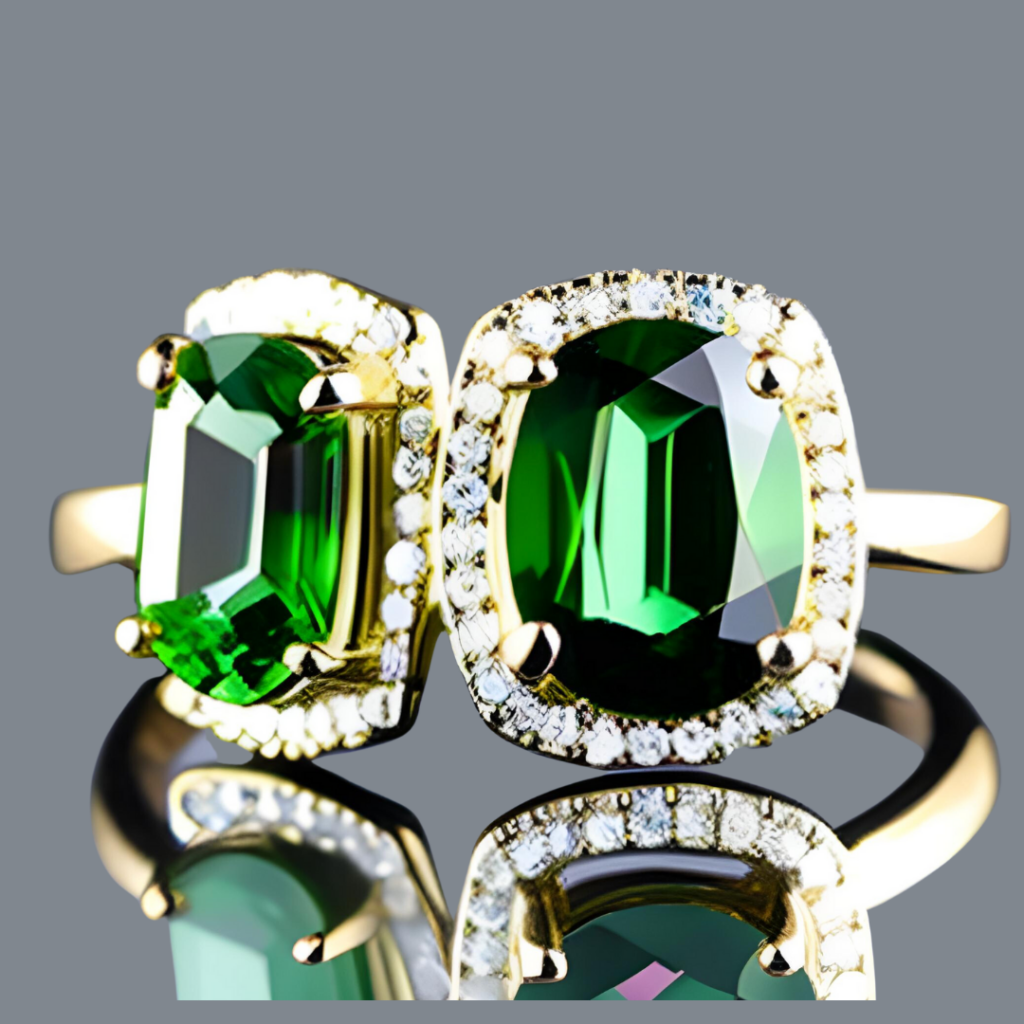
Helenite Gemstone Appearance
Helenite gemstone exhibits a distinct and captivating appearance that differentiates it from other gemstones. Here are some key characteristics of its appearance:
- Color: The most prominent feature of Helenite is its vibrant green color. The gemstone displays a range of shades, from deep green to lighter hues, resembling the lushness of forests and the brilliance of emeralds. The shade of green can vary, offering options to suit different preferences.
- Transparency: Helenite is typically transparent to translucent, allowing light to pass through the gemstone. This property enhances its brilliance and gives it a captivating glow.
- Clarity: Helenite is often free from visible inclusions or flaws, adding to its clarity and beauty.
- Cut: Helenite gemstones are skillfully cut and faceted to maximize their brilliance and highlight their captivating green color.
- Shape: Helenite gemstones can be found in various shapes, including round, oval, pear, and more.
- Size: Helenite gemstones can be found in various sizes, ranging from small accent stones to larger centerpiece gems.
Types of Helenite Gemstone
Helenite is a manufactured gemstone created by melting the ash from the 1980 Mount St. Helens volcanic eruption. As a result, there is only one type of Helenite gemstone. However, it is available in different colors, such as green, red, and yellow. The color of a gemstone is determined by the minerals present in the volcanic ash during the melting process.
Green Helenite is the most common, created from iron and magnesium-rich ash. Red Helenite is made from ash rich in iron, while yellow Helenite is created from ash rich in sulfur. Despite being an artificial gemstone, Helenite is highly valued for its unique origin story and beautiful colors.
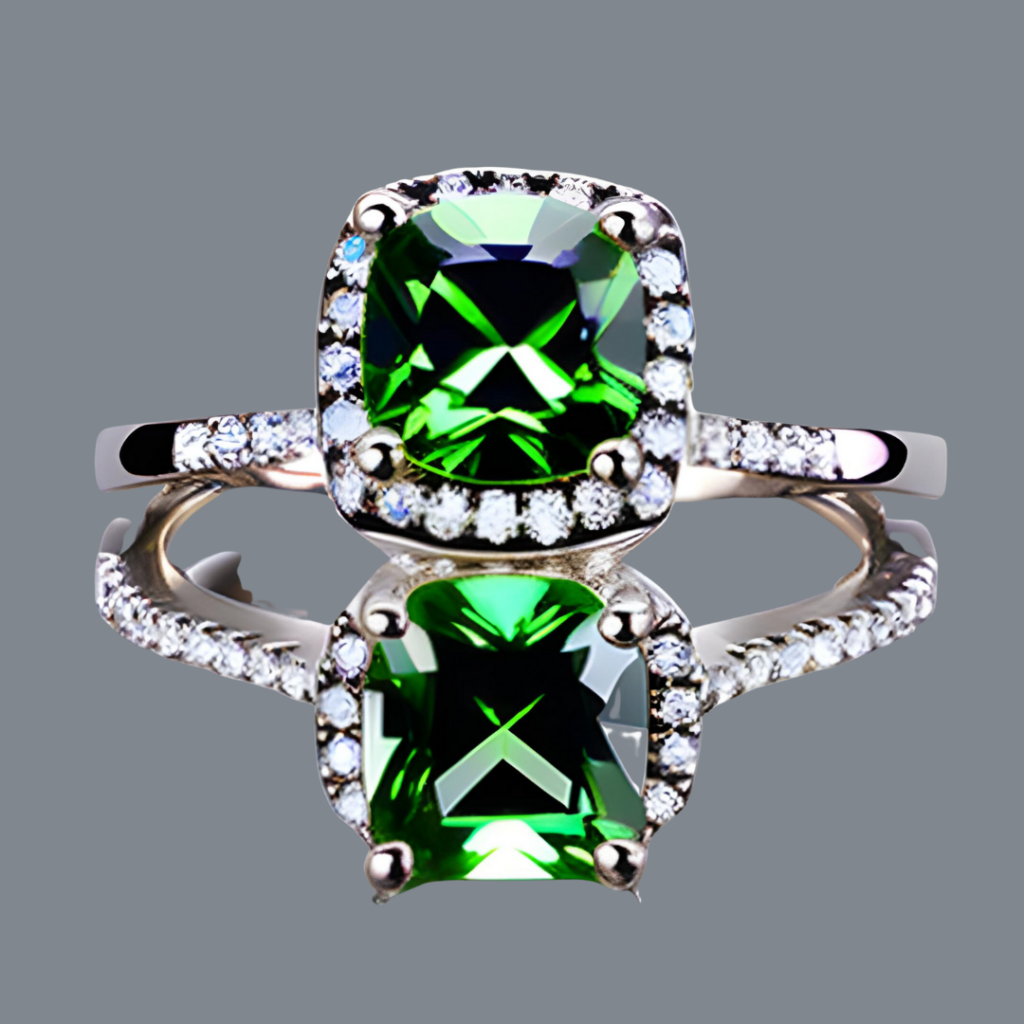
Helenite Gemstone Value and Price
Various factors can influence the value and price of Helenite gemstones. Here are some key considerations that can affect the value of Helenite:
- Carat Weight: Like many gemstones, the carat weight of Helenite plays a role in its value. Generally, larger Helenite gemstones will command a higher price than smaller ones.
- Color: The color of Helenite is a significant factor in determining its value. Gemstones with intense and vibrant green hues are typically more desirable and valuable.
- Cut: The cut of a Helenite gemstone can greatly affect its value. A well-cut gemstone with precise faceting or a smooth, symmetrical cabochon can maximize its brilliance and beauty.
- Clarity: The clarity of Helenite refers to the presence or absence of visible inclusions or flaws within the gemstone. Gemstones with higher clarity, free from noticeable inclusions, are more valuable.
- Origin and Rarity: The origin and rarity of Helenite can also impact its value. Gemstones directly sourced from Mount St. Helens may command higher prices due to their rarity and collectible nature.
- Treatments and Enhancements: The presence or absence of treatments or enhancements can influence the value of Helenite.
The price of Helenite gemstones is also influenced by market demand and consumer preferences.
How Can You Tell if Helenite Gemstone Is Real?
Verifying the authenticity of a Helenite gemstone can be done through various tests and observations. Here are some methods that can help:
- Visual Inspection: Start by visually examining the gemstone. Genuine Helenite should display a vibrant green color with various shades.
- Refractive Index: The refractive index of Helenite can provide insights into its authenticity.
- Hardness Test: On the Mohs scale, Helenite has a hardness rating of 5.5 to 6.5. This indicates that it is moderately hard. While this test alone cannot confirm the authenticity of Helenite, it can be an indicator.
- Heat Resistance: Genuine Helenite gemstones are made from volcanic ash that has been melted and fused. This means they should be heat resistant.
- Gemological Testing: Professional gemological testing can be conducted for a more conclusive assessment. Certified gemologists can use advanced testing methods and equipment to analyze the gemstone’s properties, such as its chemical composition and optical characteristics. These tests can provide precise results regarding the authenticity of Helenite.
What Does Helenite Gemstone Symbolize?
Helenite gemstone carries symbolic meanings that resonate with many individuals. Here are some common symbols associated with Helenite:
- Transformation: Helenite represents the ability to rise from the ashes and embrace new beginnings. It serves as a reminder that change can lead to personal growth and transformation.
- Emotional Healing: Helenite is believed to aid emotional healing and promote forgiveness. It is associated with releasing emotional baggage, letting go of the past, and fostering inner peace.
- Spiritual Growth: Helenite is often connected with spiritual growth and enlightenment. The gemstone can assist in meditation, introspection, and gaining insights into one’s spiritual journey.
- Resilience and Strength: The association of Helenite with the volcanic eruption of Mount St. Helens symbolizes resilience and strength. Nature’s power and resilience are highlighted by the reminder it provides. This reminder also emphasizes the ability to overcome challenges.
- Nature and Earth Connection: The vibrant green color of Helenite reflects the beauty of nature and the Earth. It symbolizes a connection to the natural world and the importance of environmental awareness and preservation.
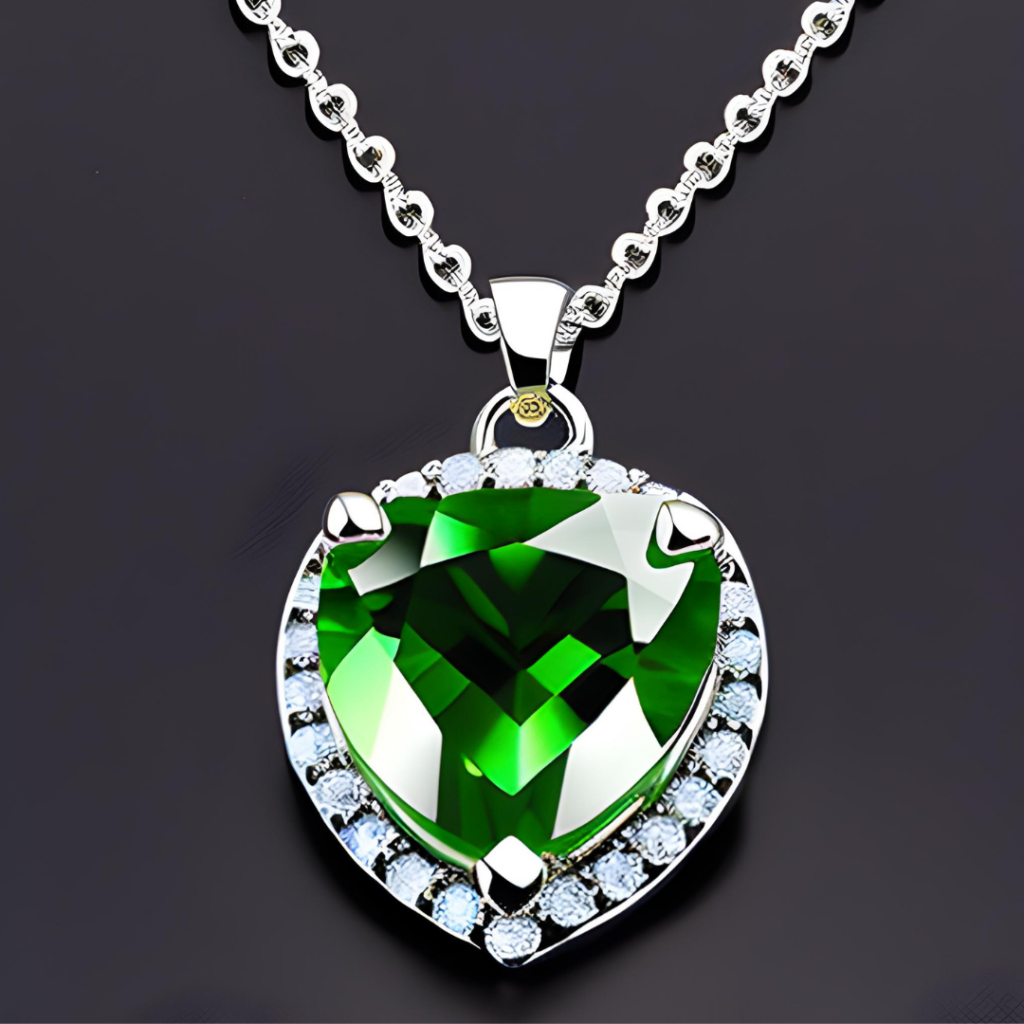
Uses of Helenite Gemstone
Here are some common uses of Helenite:
- Jewelry: One of the primary uses of Helenite is in jewelry making. The gemstone is often faceted or cabochon-cut and used as center stones or accent gems in rings, earrings, pendants, bracelets, and necklaces.
- Collectibles: Some individuals collect Helenite gemstones and jewelry to commemorate the natural event and appreciate the craftsmanship of transforming volcanic ash into a gemstone.
- Spiritual and Healing Practices: Helenite is used in spiritual and healing practices due to its symbolic meanings and believed metaphysical properties.
- Fashion and Accessories: Helenite’s vibrant green color can make a bold fashion statement. The gemstone is sometimes used in fashion accessories such as brooches, hairpins, and belt buckles.
- Gifts and Mementos: Helenite jewelry or loose gemstones can make meaningful gifts or souvenirs. They can be given to commemorate special occasions, celebrate personal achievements, or symbolize transformation and personal growth.
Which Gemstones Go Best With Helenite Gemstone?
Helenite is a volcanic glass that is usually green in color, so it pairs well with other green gemstones such as Amethyst, Peridot, and Jade. These gemstones have striking colors and can complement each other nicely in jewelry. Helenite can also be paired with clear or white gemstones like diamond, white sapphire, or white topaz to create a contrasting effect.
It can also go well with Green Tourmaline and Emerald. These gemstones can also add brightness and sparkle to the jewelry piece.
Ultimately, the choice of gemstones to pair with helenite depends on personal preference and the desired effect of the jewelry.

How To Take Care Of Helenite Gemstone Jewelry?
Proper care of Helenite gemstone jewelry will help preserve its beauty and longevity. Here are some guidelines to follow:
- Cleaning: Clean your Helenite jewelry regularly to remove dirt, oils, and debris that may accumulate over time. Use a mild soap or jewelry cleaner and warm water.
- Avoid Harsh Chemicals: To keep your jewelry in good condition, avoid exposing it to harsh chemicals like bleach, chlorine, and strong cleaning agents. These chemicals can damage the gemstone and affect its appearance.
- Storage: Proper storage is essential to prevent scratches and damage to your Helenite jewelry. To avoid scratches, store your jewelry in a separate compartment or soft pouch. This will protect it from coming into contact with other jewelry pieces.
- Avoid Extreme Temperatures: Helenite is a type of glass, and extreme temperature changes can cause thermal shock and potential damage. Avoid exposing your jewelry to sudden temperature fluctuations.
- Remove During Activities: It is advisable to remove your Helenite jewelry when engaging in activities that may subject it to impact or damage.
- Professional Maintenance: Periodically have your Helenite jewelry checked by a professional jeweler. They can inspect the piece’s settings, prongs, and overall condition to ensure it remains secure and in good condition.
To ensure the longevity of your jewelry, follow these care tips. With proper care, you can enjoy your jewelry for years to come.
Frequently Asked Questions (FAQ)
Can Helenite Gemstone be used for engagement rings or fine jewelry?
Helenite Gemstone can be used in engagement rings and fine jewelry designs. Its beauty and durability make it suitable for such purposes, offering a unique and meaningful choice.
Does Helenite Gemstone have any birthstone associations?
Helenite is not recognized as a traditional birthstone for any specific month. However, its green color makes it a choice for individuals born in months without a designated green birthstone.
Can Helenite Gemstone be passed off as a natural gemstone?
As an artificial Gemstone, Helenite should not be misrepresented as a natural gemstone. It is important to ensure accurate disclosure when buying or selling Helenite jewelry.
Can Helenite Gemstone be re-polished if it gets scratched?
Helenite Gemstone can be re-polished if necessary. However, consulting with a professional gemstone cutter or a jeweler with experience working with Helenite is recommended to ensure proper care and restoration.
Are there any specific gemological certifications for Helenite Gemstones?
Currently, there are no specific gemological certifications exclusively for Helenite. However, reputable jewelers or gemological laboratories may provide assessments or reports detailing the gemstone’s properties and authenticity.



